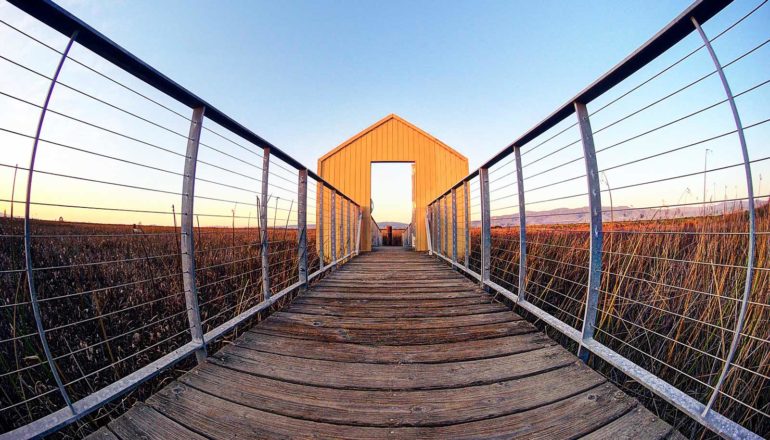
Climate change and rising sea levels are breaking down the ecosystems that protect coastal communities and their threshold for recovery is lower than previously thought, report researchers.
Salt marshes and other ecosystems act as barriers against storm surges and natural disasters for coastal communities around the world. The resiliency of these natural barriers normally allows them to continue to function and protect the communities they separate from the sea.
Now, engineers are taking a deeper look into the fundamentals of coastal ecosystems and how Engineering With Nature elements can fortify and, in some cases, recreate these vital protections.
“For these coastal ecosystems to be more useful in engineering applications, we need to know how they respond, how they adapt, how easy they are restored, and, in case they fail, how easy it is to create them,” says Orencio Duran Vinent, assistant professor in the ocean engineering department at Texas A&M University.
Salt marshes are some of the most valuable and vulnerable ecosystems in the world. Using a simplified formulation for sediment transport, the new research identified that the marshes don’t need to completely fall beneath rising sea levels to begin degrading, but instead begin to fragment and drown piece by piece at a lower water level.
“Billions of people live in coastal areas and they face the outcome of rising sea levels and increasing storminess. The question becomes, what part of the landscape can survive?”
“Every ecosystem that adapts to external conditions has a limit of adaptation, a threshold above which they don’t really adapt anymore, and they drown or disappear,” says Duran Vinent. “In the case of ecosystems that are adapting to rising sea levels, the threshold is dependent on how fast the sea level is rising. If they’re able to keep above the water, then they restore themselves and stay healthy.”
The issue that coastal engineers and scientists have faced, he says, is that they don’t know what that threshold is, meaning that they don’t know which regions of the ecosystem are most vulnerable or at risk of degradation.
Through the use of computational modeling, Duran Vinent and colleagues determined a vital new piece of information to aid in solving the mystery of salt marshes: there is more than one threshold. He says that while researchers originally believed that the drowning of a marsh occurred when the sea level rose above a certain point and overtook the land in an almost flooding manner, they discovered a second, lower threshold in which the marsh degraded and broke down from within.
Fragmentation in a coastal wetland or marsh at this threshold compares to seawater poking holes in the land little by little. Each hole becomes a new pond that grows larger in size and density and then stabilizes as the ecosystem bounces back and recovers in that area. But then more and more appear over time.
“We think that this is very informative of how degradation is actually taking place in many sites,” says Duran Vinent. “We knew that wetlands tend to develop ponds—we have seen it in Louisiana and Maryland—but it was interesting that while they are stable at first, there are more holes opening with time and eventually, the whole ecosystem will degrade.”
In addition to better understanding of the current landscapes, Duran Vinent says that he hopes the research will help to fortify the complex and ever-changing coastal environment through informed engineering decisions in the future.
“Billions of people live in coastal areas and they face the outcome of rising sea levels and increasing storminess,” he says. “The question becomes, what part of the landscape can survive?
“What part of this wonderful, complex landscape whose stability is dictated by its vegetation can actually withstand these changes? Will all of those islands and wetlands, and the value they provide, disappear? This is very useful information for engineering.”
Source: Hannah Conrad for Texas A&M University
The post Drowning salt marshes threaten coastal communities appeared first on Futurity.
from Futurity https://ift.tt/3nZMqML
No comments:
Post a Comment